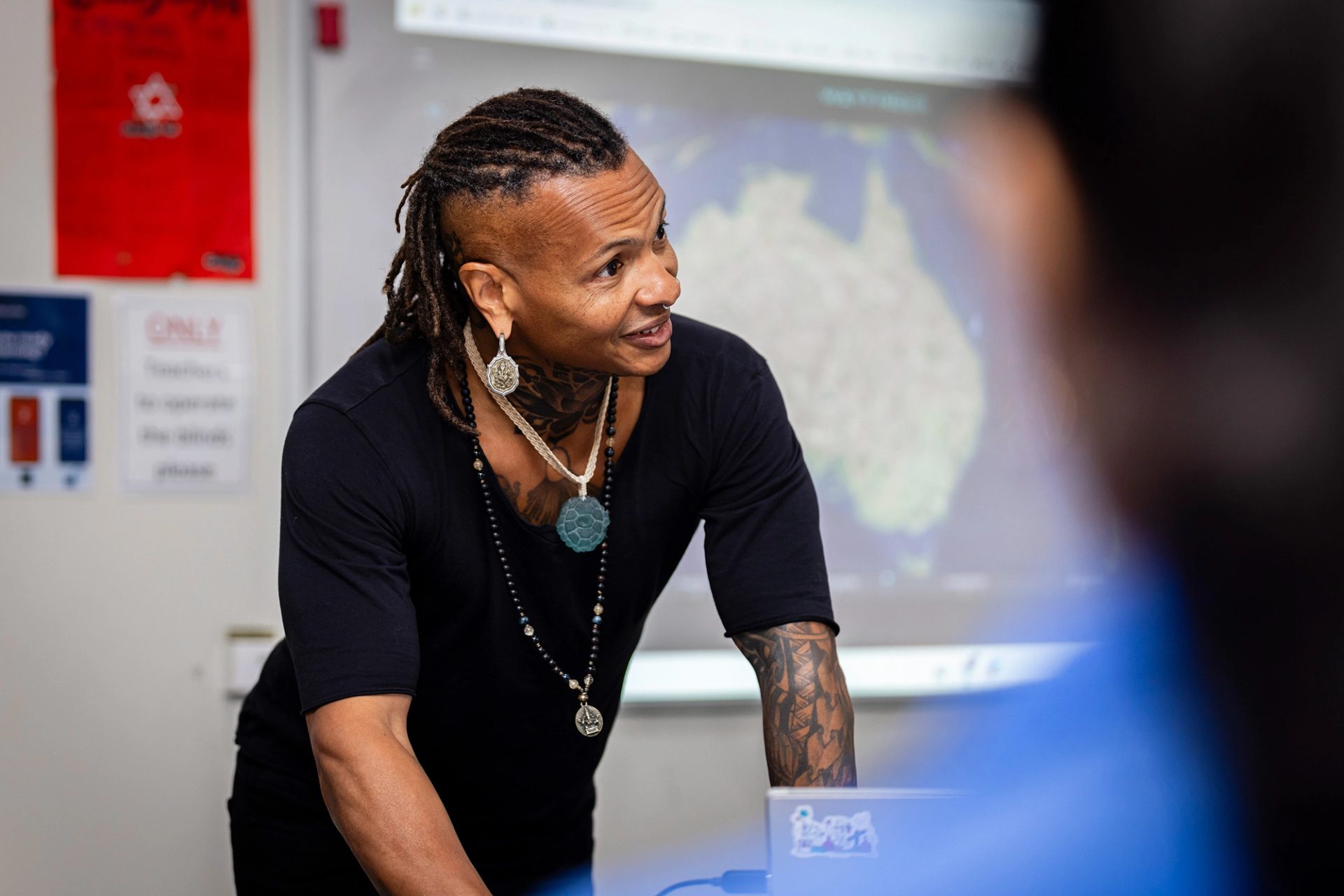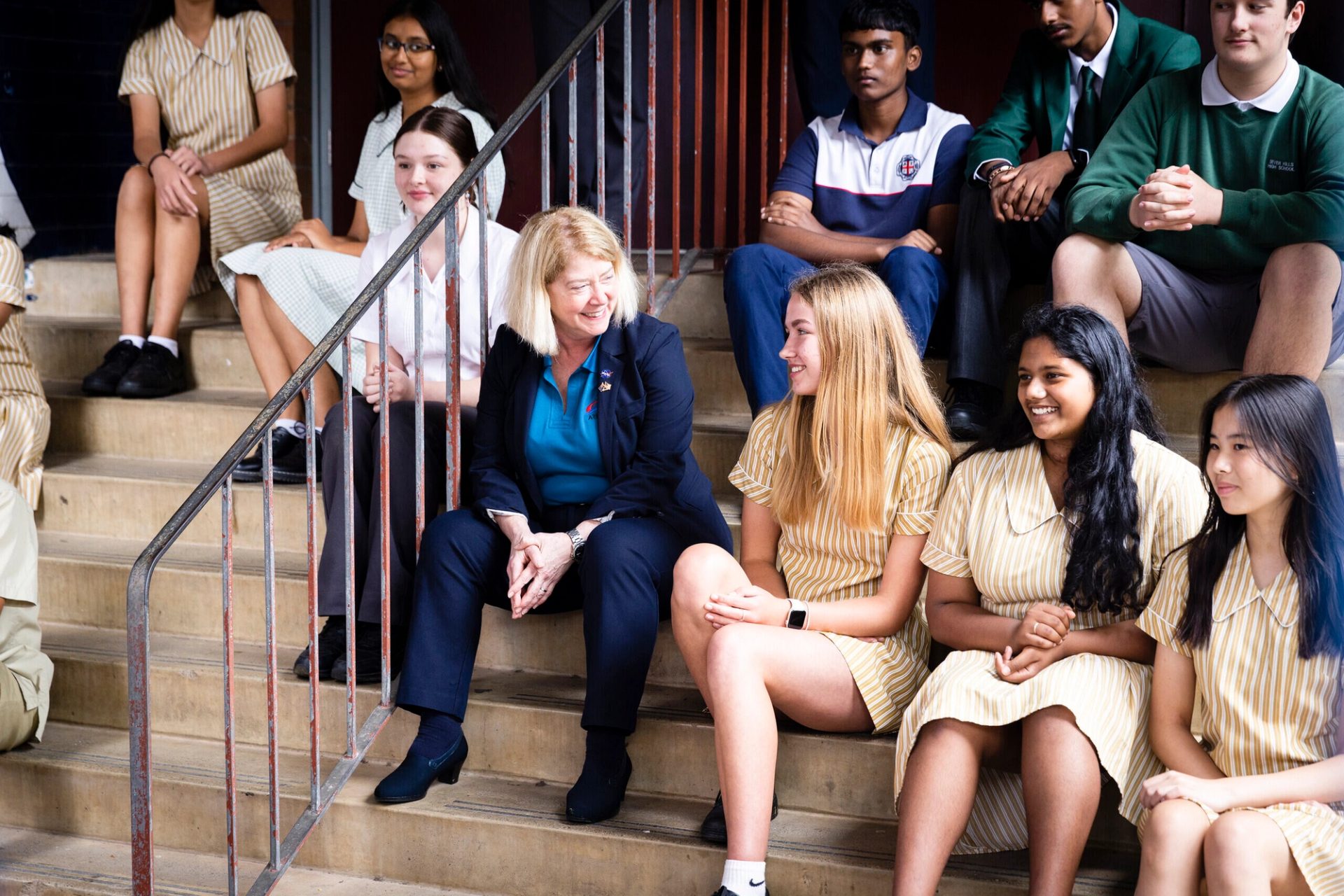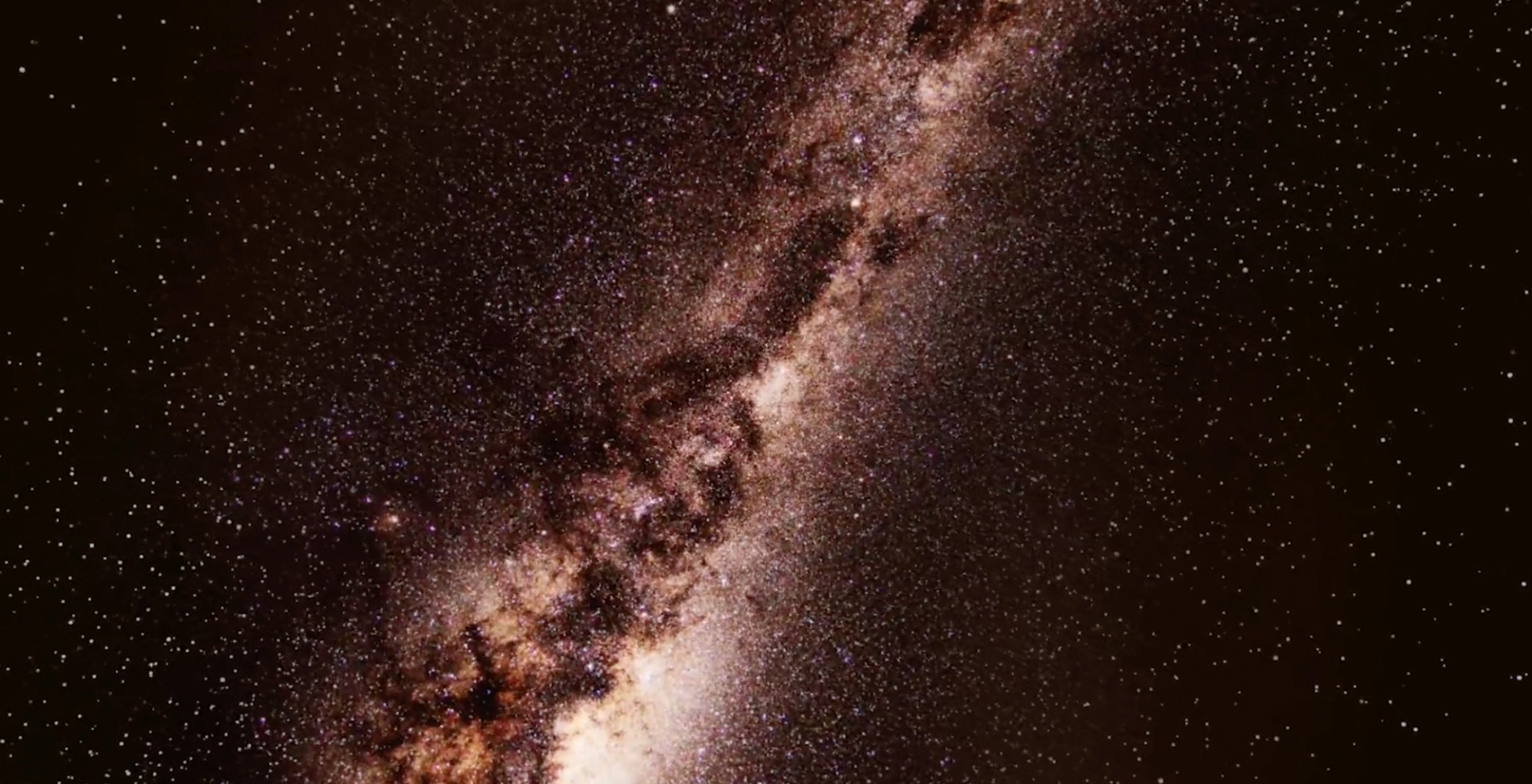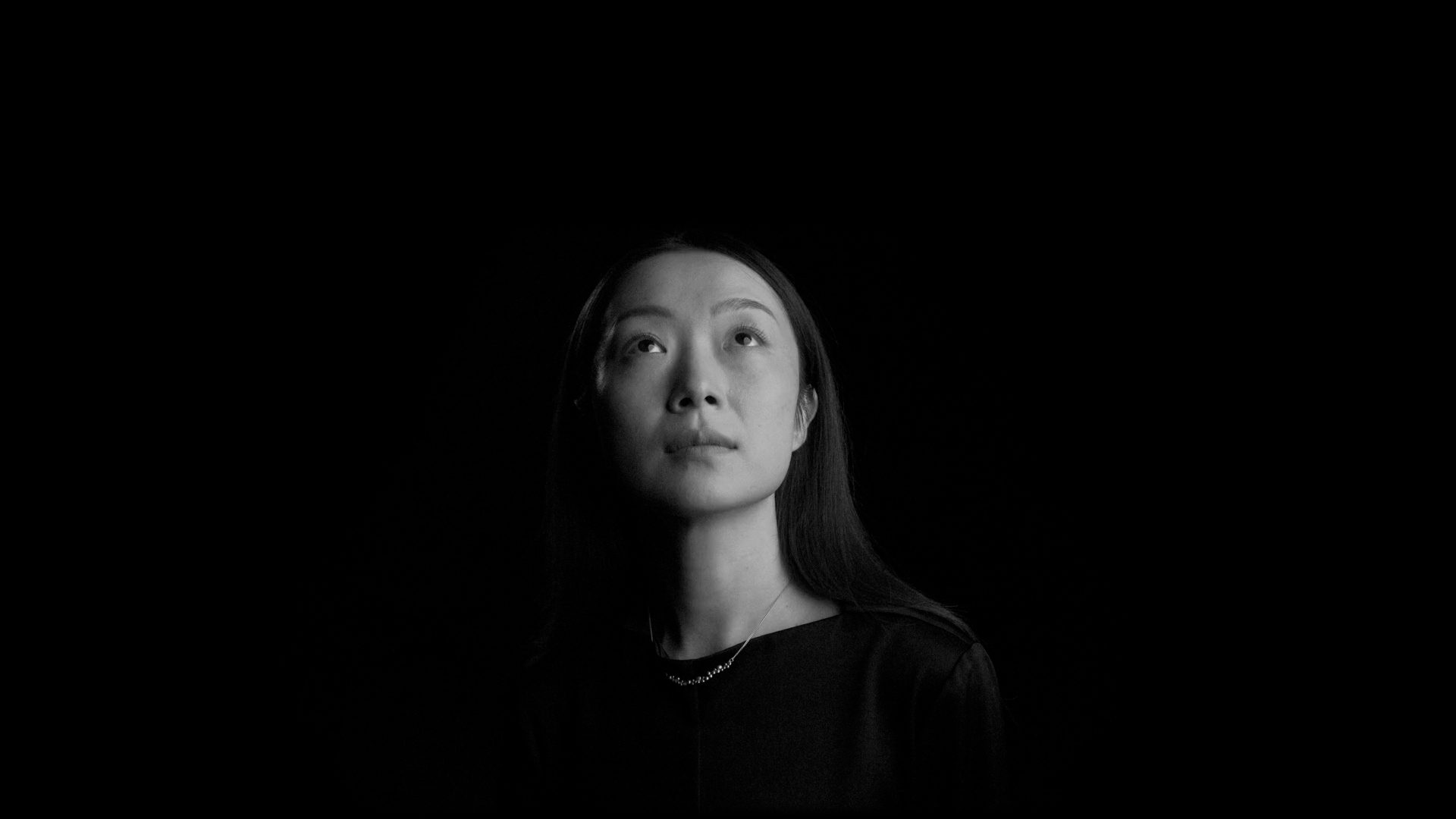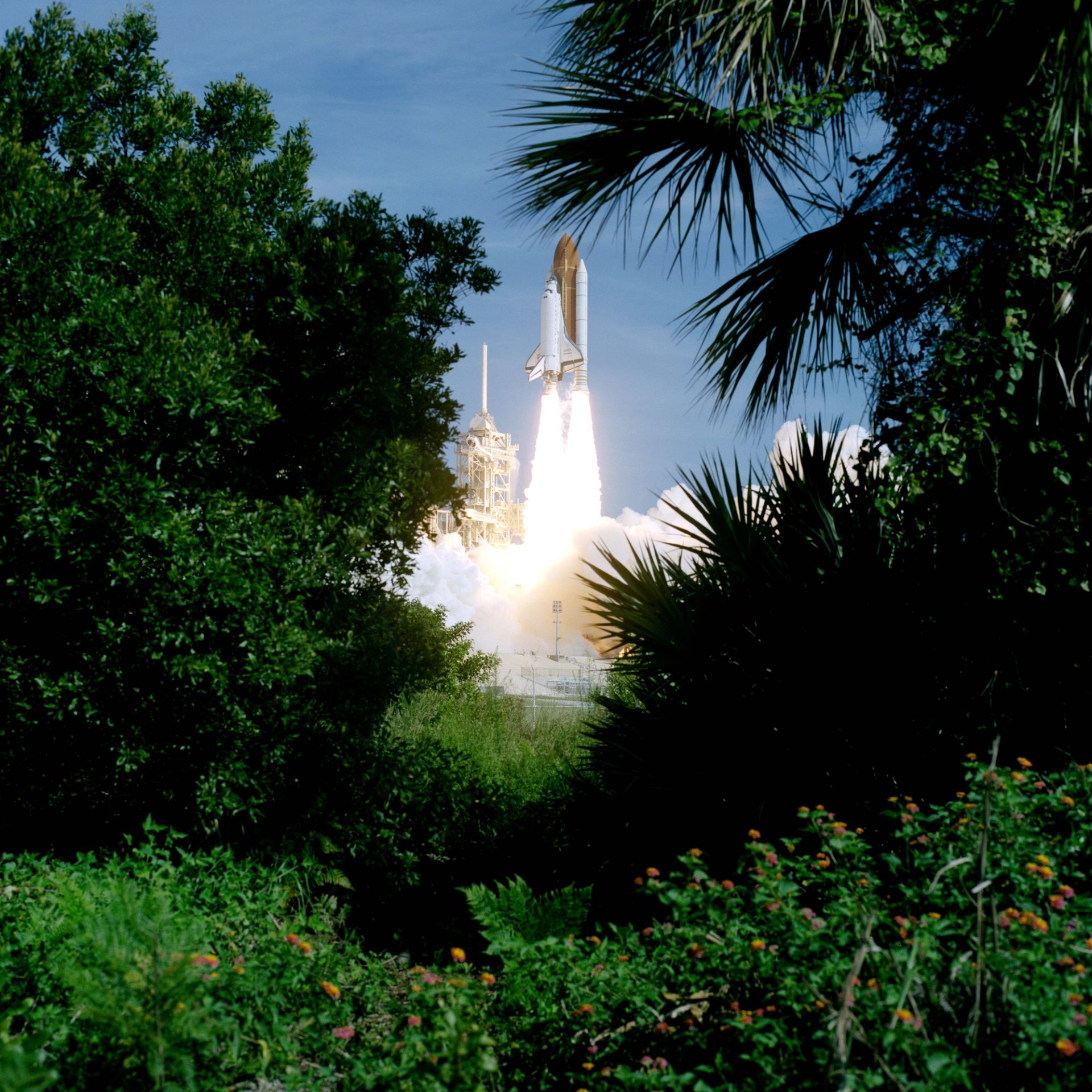Powerhouse-1 Mission Launch to the ISS

Students from Western Sydney high schools are on a quest to create a greener future on Earth — and possibly Mars.
On Tuesday 5 November 2024 (4 November in Florida), they sent an ancient species of life-giving microalgae into orbit aboard the inaugural Powerhouse-1 space mission.
Their student-designed experiment to test how microgravity affects algae growth left Earth on the SpaceX-31 cargo resupply, destined for a 30-day mission aboard the International Space Station — an initiative of the three-year Powerhouse: Future Space program presented by the Lang Walker Family Academy and aligned with NSW Department of Education iSTEM coursework.
The space experiment could prove the students’ hypothesis about the algae’s ability to grow faster in orbit than on Earth. If the students’ assumptions are correct, they see opportunities for space-grown algae to be used in food, medicines and biofuels during interplanetary travel — and to improve environmental conditions on Earth and Mars.
Control experiments on Earth are being simultaneously conducted by students at their Western Sydney high schools using ExoLab devices. UTS is also conducting the experiment in a replica of the flown device in its Deep Green BioTech Hub labs.
Launched in 2022, the three-year project was developed in partnership by Powerhouse, Magnitude.io and the NSW Department of Education, with support from the Deep Green Biotech Hub labs at the University of Technology Sydney, Fizzics Education and Space Tango.
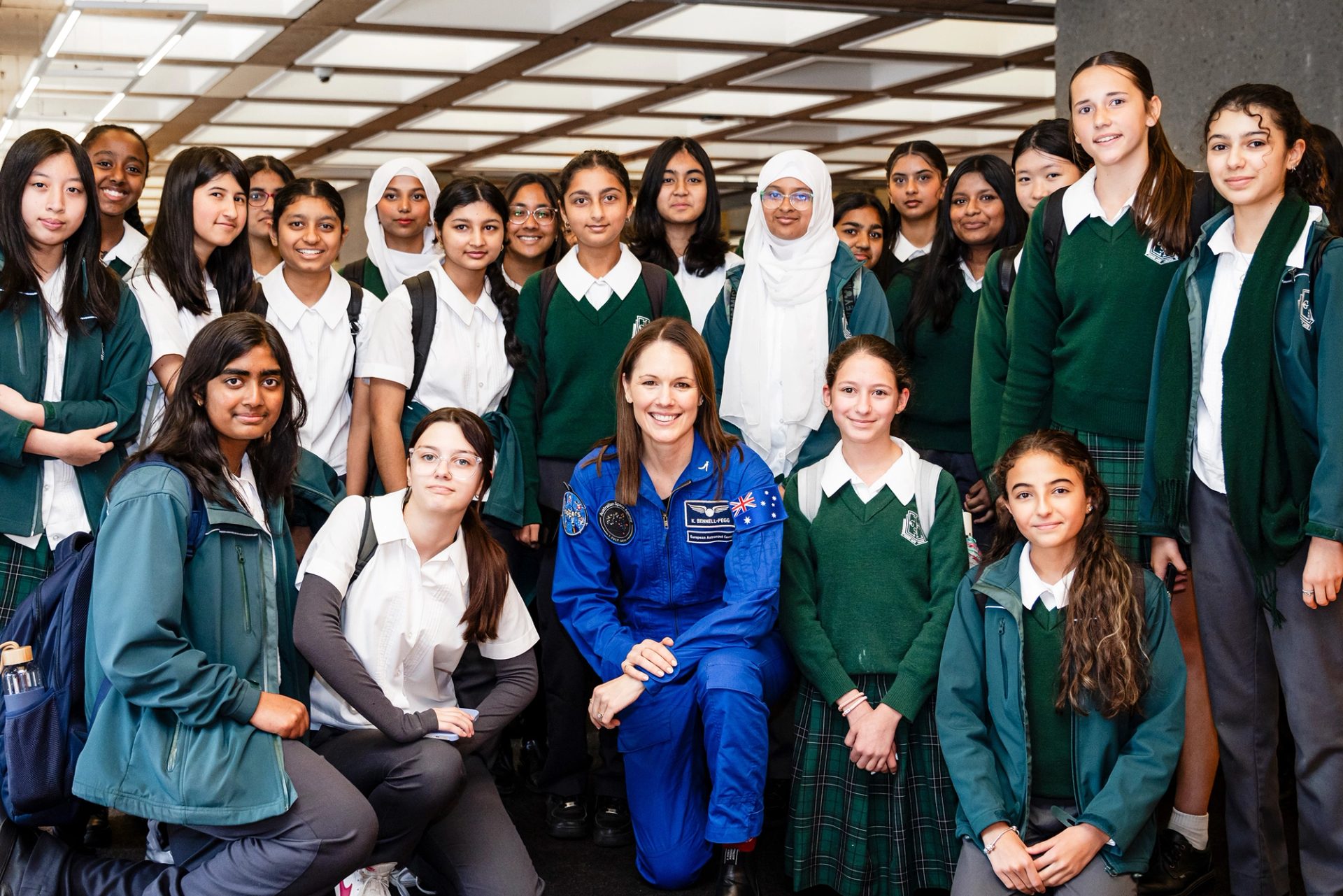
‘Meeting and talking to astronauts and members from the space industry at Powerhouse Museum, plus interacting with the exhibits showing the history of the space program, built a deep understanding of the industry and possible future career paths.’
Liftoff on 5 November 2024
The Powerhouse-1 mission launch aboard SpaceX-31 lifted off at 1.29pm AEDT on Tuesday 5 November 2024 (9.29pm on 4 November in Florida) from Launch Complex 39A at NASA’s Kennedy Space Center in Florida.
‘While the timing of the launch could shift up to the last minute, if all proceeds to plan Australians may see the rocket in the western sky around an hour after liftoff,’ Geoff Wyatt, Education program producer, Powerhouse said ahead of the launch.
‘It will look like a small smudgy cloud gradually rising higher and higher into the sky. Although SpaceX-31’s engines will have long stopped by this time, vented rocket fuel can glow as it interacts with the upper atmosphere.
'Then once Powerhouse-1 is aboard the International Space Station, you can watch the ISS on its travels each evening. Weather permitting it should be a great bright view.'
SpaceX-31 (sometimes identified as SpX-31) is a cargo spaceflight using a Cargo Dragon spacecraft on a Falcon 9 rocket operated by SpaceX under a Commercial Resupply Services contract with NASA. This mission is the spacecraft’s fifth flight.
'Powerhouse-1 is 20cm by 20 by 10, so imagine two shoe boxes going up on the SpaceX-31 cargo resupply,' explained Ted Tagami, CEO of Magnitude.io. 'Three days prior to the launch we were at Kennedy Space Center loading up the lab based on the protocols the students have established.
'We synchronise with the ISS in orbit, which is traveling at around 7.5km a second — it goes around the Earth in 90 minutes — so docking is a very precise dance. Once that occurs, the astronauts float over to the Dragon spacecraft and start unpacking the cargo. They'll grab our flight bag, then float over to the Columbus module where they open up a mid-deck locker and put the experiment inside. Imagine something that looks like a computer rack but with a locker door on it. They'll boot it up and make sure we've got imaging and telemetry on Earth, then they'll float away and the experiment will run autonomously for four weeks.
'The integration process is basically this in reverse: it's taken out of the locker, put back into a flight bag and into the capsule on the Dragon for return to Earth. About 30 days after the launch, it'll splash down into the Atlantic and at that point, the recovery vessel is there. They get it over to Kennedy Space Center and this is when we grade it.'
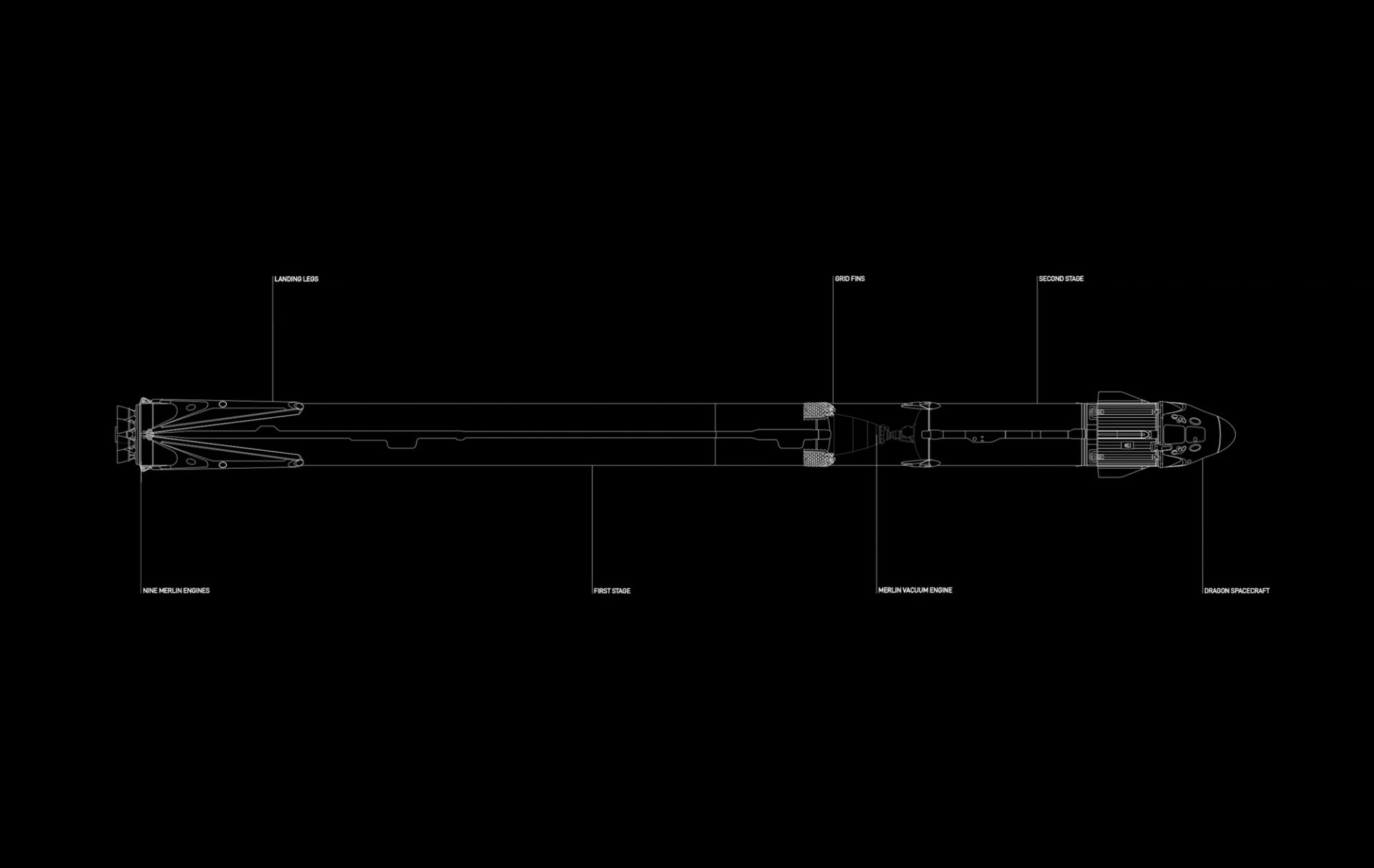
‘During the ground trial experiments students concluded that algae needs a longer photoperiod and lower light intensity for successful growth.’
Ancient algae could unlock greener future
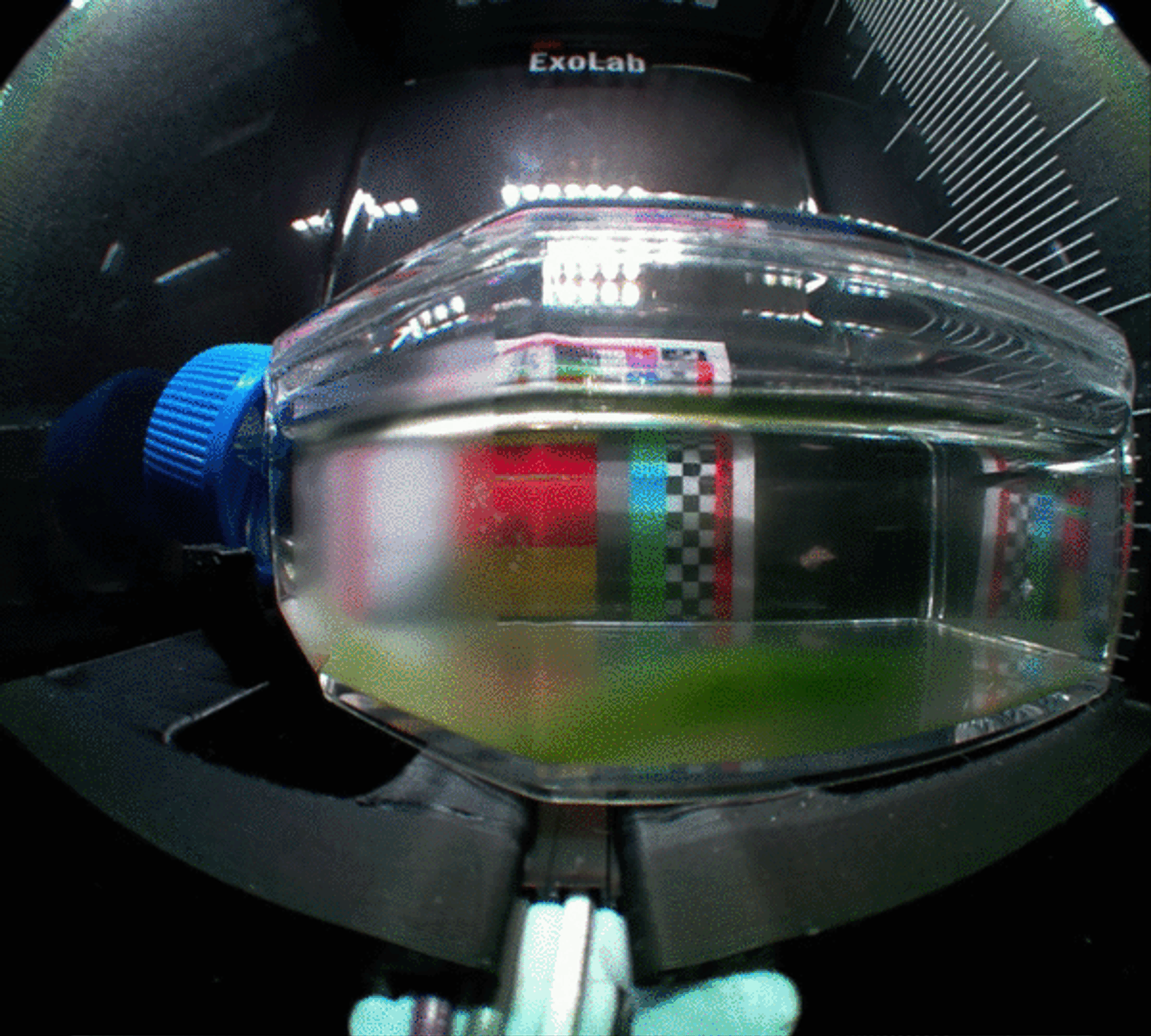
Chlorella vulgaris, the microalgae species selected for the Powerhouse-1 mission, was among the first lifeforms to evolve at the beginning of Earth’s history. By successfully converting methane and carbon dioxide into oxygen it helped create the right atmosphere for other lifeforms to evolve on our planet. It is now commonly used as a protein-rich food supplement, particularly popular in Japan.
The microalgae’s home-away-from-home aboard the International Space Station is a flask inside a specially engineered device, designed in collaboration with Western Sydney students, Powerhouse, Space Tango and Magnitude.io. Each school participating in the program is also using 10 ExoLabs for synchronous missions (control experiments) and ground trials. These ExoLabs use custom racks the students designed and produced with 3D printers.
Experiments conducted by Western Sydney students in the Powerhouse Future Space program comparing growth of Chlorella vulgaris in microgravity versus on Earth could provide answers to important scientific questions about its potential to positively change Earth’s climate once again — and benefit space exploration.
‘Our experiment is aimed at finding a sustainable way to produce algae or to make algae reproduce faster. Our hypothesis is that algae will hyper-reproduce in the microgravity of the ISS due to the lack of gravity,’ Powerhouse-1 mission team member Marko from Casula High School explained, adding that in the long term, oxygen-generating algae could help make Mars a green planet.
'It will be interesting to see how it grows in the near absence of gravity, when we lose things like convection,' said Ted Tagami. 'If your algae starts to grow, what does it do? It's heavier than water, so here on Earth it settles at the bottom. There's no settling in space, so what's going to happen to our algae in orbit? Is it going to cling to the sides? Is it going to clump together? Will it stay dispersed? It’ll be fascinating capturing images looking down on top of the vials. In the world we live in today, my view is that answers are no longer as valuable as the questions that are asked. A great question will open up more questions. That’s where curiosity gets engaged. That's where discovery happens. And that's where wonder happens.'
Back on Earth, the students have already conducted ground trial experiments guided by algae experts at the UTS BioTech Hub facility, followed by four phases of ground trials at their schools guided by Sophie Poisel, head of Lang Walker Family Academy, Powerhouse, Ben Newsome, director of Fizzics Education, and teachers at each school. These experiments revealed the ideal growing conditions for Chlorella vulgaris on Earth are 15 hours of very low intensity light (9.6 lumens), an average temperature of 25ºC and a medium which includes nutrients to support growth.
'During the ground trial experiments students analysed CO2 and humidity data and linked that data to the process of photosynthesis in plants,' said Franklin Lamin, iSTEM teacher, Arthur Phillip High School. 'The students drew a connection between the fluctuations shown in the data and the photoperiod (the period each day an organism is exposed to light) for their flasks and concluded that algae needs a longer photoperiod and lower light intensity for successful growth. Lower growth in unsuccessful flasks was linked to a shorter photoperiod. They also learnt that the successful flasks had lower light intensity compared to the unsuccessful ones.'
Students in the Powerhouse: Future Space program have also studied other potential uses for algae connected to sustainability, such as biofuels, medicines and nutrients for humans and plants alike. Other experiment ideas proposed for consideration included investigating how microgravity affects microbial resistance, honey production, grasshoppers, the development of insulin, the development of neurons and the growth of mould and Australian native plants.
Powerhouse-1 Mission Patch
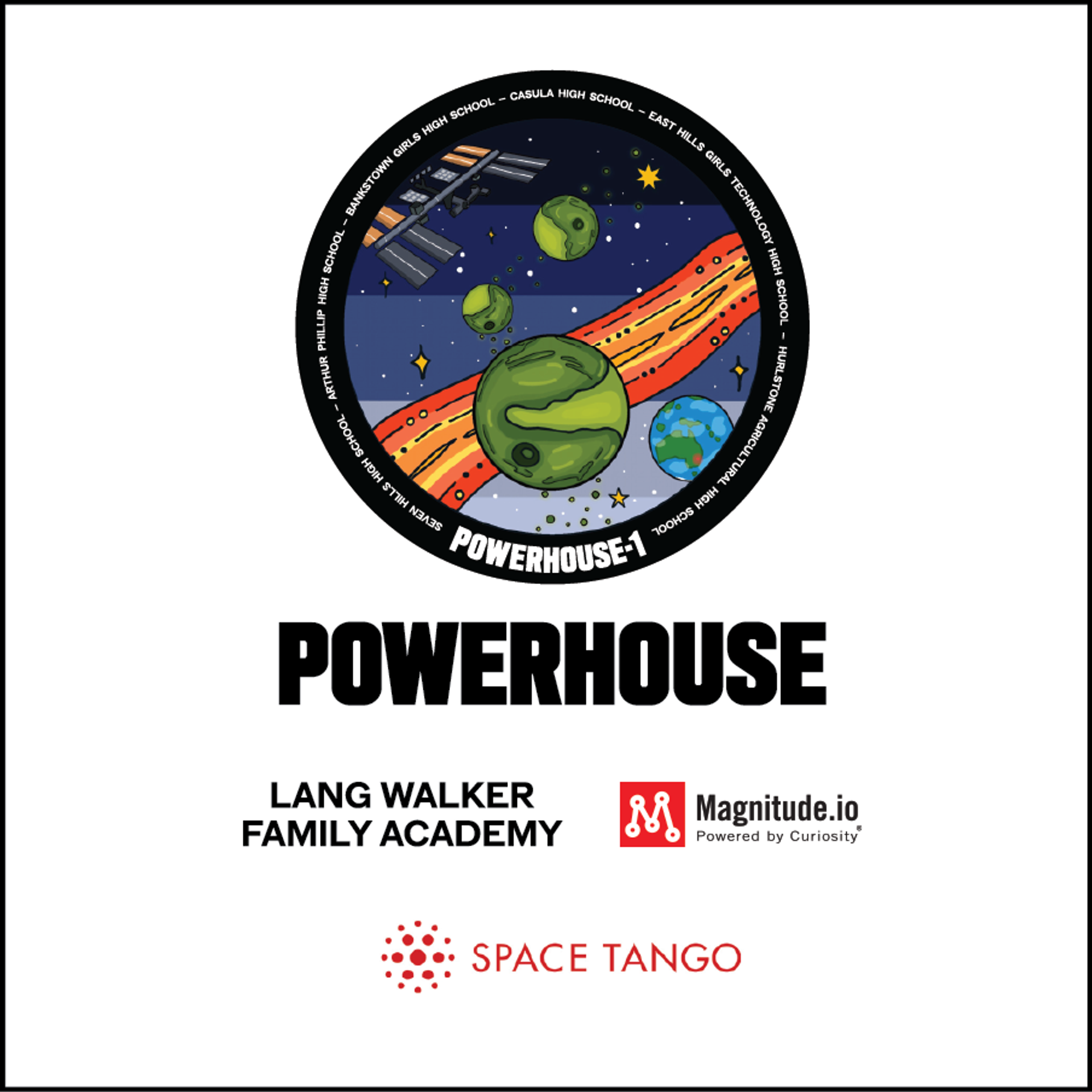
Almost every spaceflight since 1963 has been celebrated with a bespoke mission patch, usually featuring symbols representing the mission’s purpose and country of origin.
Powerhouse: Future Space students were invited to submit their own designs for consideration in Term 2, 2024. On 5 April, a design by Seven Hills High School student Jewen was selected, and as her teacher Carissa Howell noted, ‘When Jewen's design for the mission patch was announced, the students were just as excited as Jewen, almost as if theirs had been selected.’
Jewen’s design features the chosen microalgae, Chlorella vulgaris, the ISS, a significant constellation, our galaxy and the names of the six schools collaborating on the mission alongside the mission’s name: Powerhouse-1.
‘Last year we went to Hurlstone Agricultural High school and met Pam Melroy who has been to the ISS multiple times. I found her story very inspiring so that's another reason I added the ISS,’ Jewen said.
‘Australia features on the globe because we want to recognise that we are a team from Australia. Western Sydney is marked on the globe with a red dot, which is significant because that’s where Powerhouse Museum and the schools involved are based. All six schools in the program this year are featured on the patch because we are a team, and we’re all working together to make this experiment possible.’
'The white dots at the back represent a constellation. I wanted to include Aboriginal connection to Sky Country, so I chose the famous story of the Seven Sisters, also called the Pleiades, shared with us by Karlie Noon during a Future Space event in 2023. The seven sided and the normal star are the representation of the Southern Cross. Our galaxy is included because it’s going up into space, it represents the vast universe and the endless possibility of what could be out there.’

Powerhouse: Future Space Guest Presenters
Karlie Noon
Gamilaraay astrophysicist and mathematician, and co-author of the award-winning book First Knowledges – Sky Country
Dr Tim Parsons
Director of Lunar Ascent, an Australian company developing a method to retrieve space junk orbiting the moon
Katherine Bennell-Pegg
Australian astronaut and space engineer who is leading the Australian Space Agency’s technical efforts on the nation’s first Moon rover mission
Dr Moriba Jah
Associate Professor of Aerospace Engineering at The University of Texas, and chief scientist of space company Privateer
Dr Maya Nasr
Remote sensing scientist and expert in space law and policyat the US Environmental Defense Fund and Harvard University
Dr Badri Younes
Deputy associate administrator for Space Communications and Navigation, Human Exploration and Operations Mission Directorate at NASA
Dr Meganne Christian
Australian astronaut, engineer and materials scientist who is a member of the European Space Agency astronaut reserve for future missions
Dr Mary Ellen Weber
Scientist, business leader and former NASA astronaut who was a crew member onseveral space shuttle missions
Pam Melroy
NASA Deputy Administrator and former astronaut who was one of only two women to command a space shuttle
Inspiring STEM Studies and Careers
Powerhouse: Future Space students had several inspiring in-person and virtual visits from space experts who shared their passions for STEM and space, career insights and discoveries.
After a team development session in April 2024, the majority (78%) of students reported they felt there was a career in the space industry for them in NSW. One student highlighted the importance of studying space, ‘Because we learn from it and might need it in the future’; while another commented, ‘Space research is very important and if we do not find better ways of living on Earth, we may have to find a new planet to move to.’
'Some of the amazing experiences provided by Powerhouse staff included using the ExoLabs to experiment with, knowing the equivalent experiment would be launched into space,' reported a student at East Hills Girls Technology High School.
'Meeting and talking to the astronaut and members from the space industry at Powerhouse Museum, plus interacting with the exhibits showing the history of the space program, built a deep understanding of the industry and possible future career paths,' added another student from East Hills Girls Technology High School. 'Attending days at UTS with professionals in the industry and working with other schools built collaboration and connectedness to the experiments we were doing.'
‘While it has been surreal for the students to meet astronauts and other people with amazing careers, the personal growth and insight the students have gained have really had the biggest impact.’
'The Future Space program has been an amazing experience for our students with surprising results,’ said Carissa Howell, Head Teacher Wellbeing and STEM coordinator at Seven Hills High School. ‘While it has been surreal for the students to meet astronauts and other people with amazing careers, the personal growth and insight the students have gained have really had the biggest impact.
'We have found students not only gained a better understanding of microgravity, biology, chemistry and physics, they have strengthened and developed transferrable skills and confidence to be leaders. The program gave two of the girls the skills and confidence to apply for school leadership positions: they are now School Captain and School Vice Captain.’
Suada Bilali, Principal at Bankstown Girls High School said she was excited to see students participate in the Powerhouse: Future Space program: ‘It's incredibly inspiring to witness their enthusiasm and dedication as they embark on this journey towards becoming the next generation of space explorers,’ she added.
‘This world-class immersive STEM learning opportunity not only provides them with invaluable hands-on experience but also fosters collaboration with leading researchers, preparing them for the complexities of real-world space missions. I have no doubt this experience will ignite their passion for STEM and propel them towards limitless possibilities in the field of space exploration.’

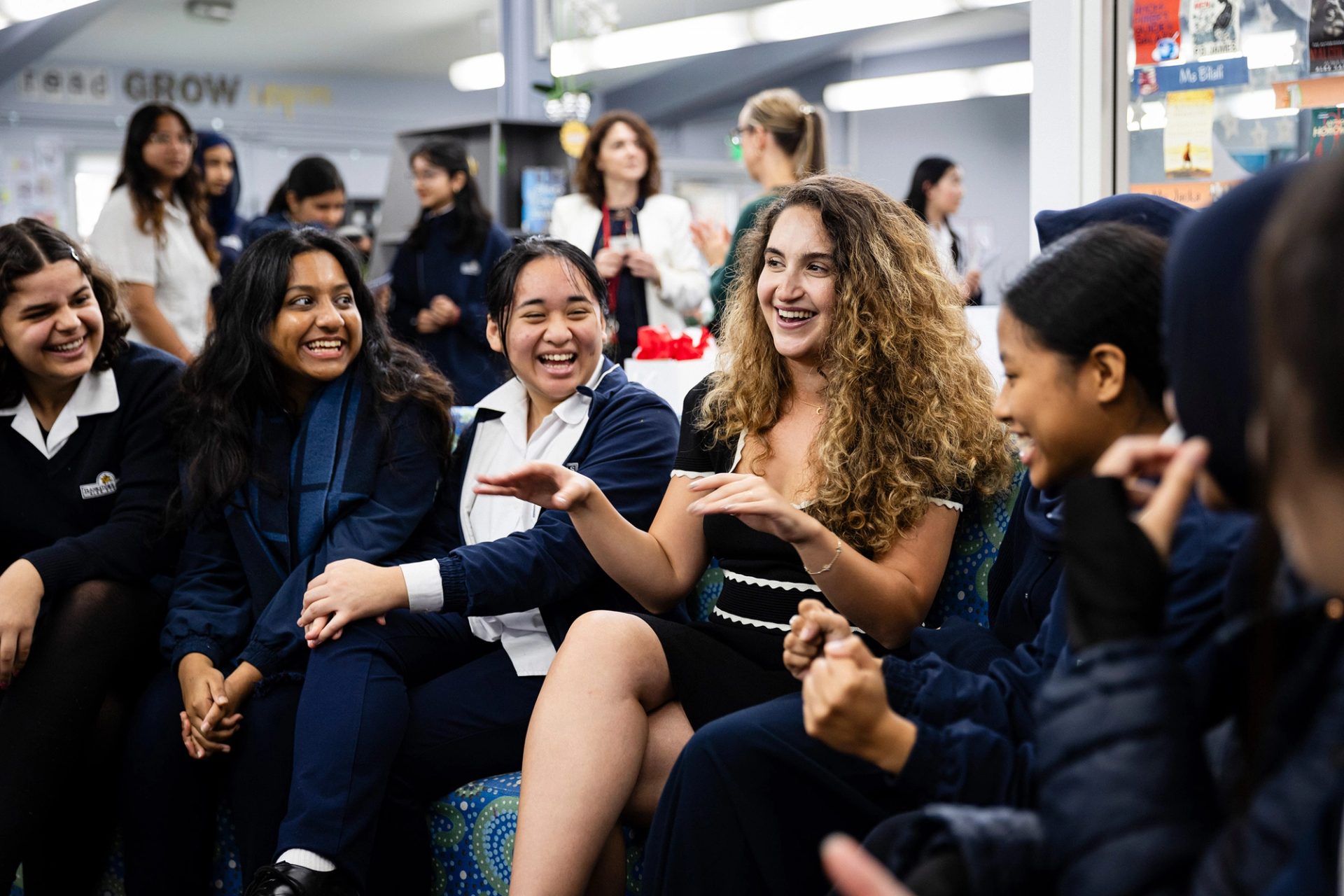
‘Dr Maya Nasr’s visit to Bankstown Girls High School was extremely eye opening and insightful. Listening to her story and the struggles she went through to get to where she is now, just to get into the academy despite her background and villagers’ beliefs. Her drive and passion for space and engineering really proved to us all that we can all achieve anything we set our minds to as long as we have the drive to do so.’
Participants spoke with Head of Lang Walker Family Academy Sophie Poisel and Powerhouse editor Stuart Ridley.
About
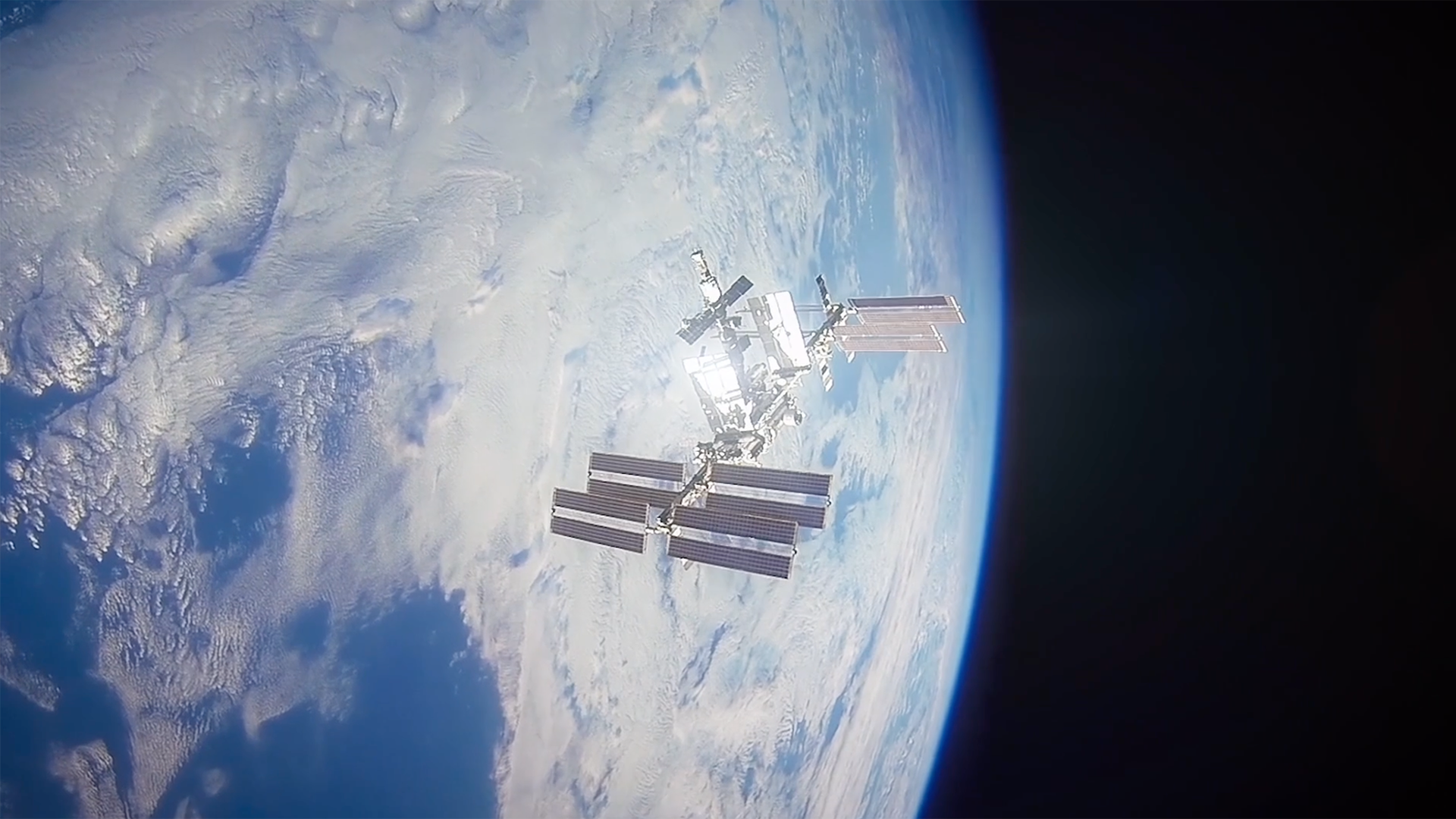
Future Space
Powerhouse: Future Space is the inaugural program of STEM learning opportunities presented as part of the Lang Walker Family In-Schools Program.
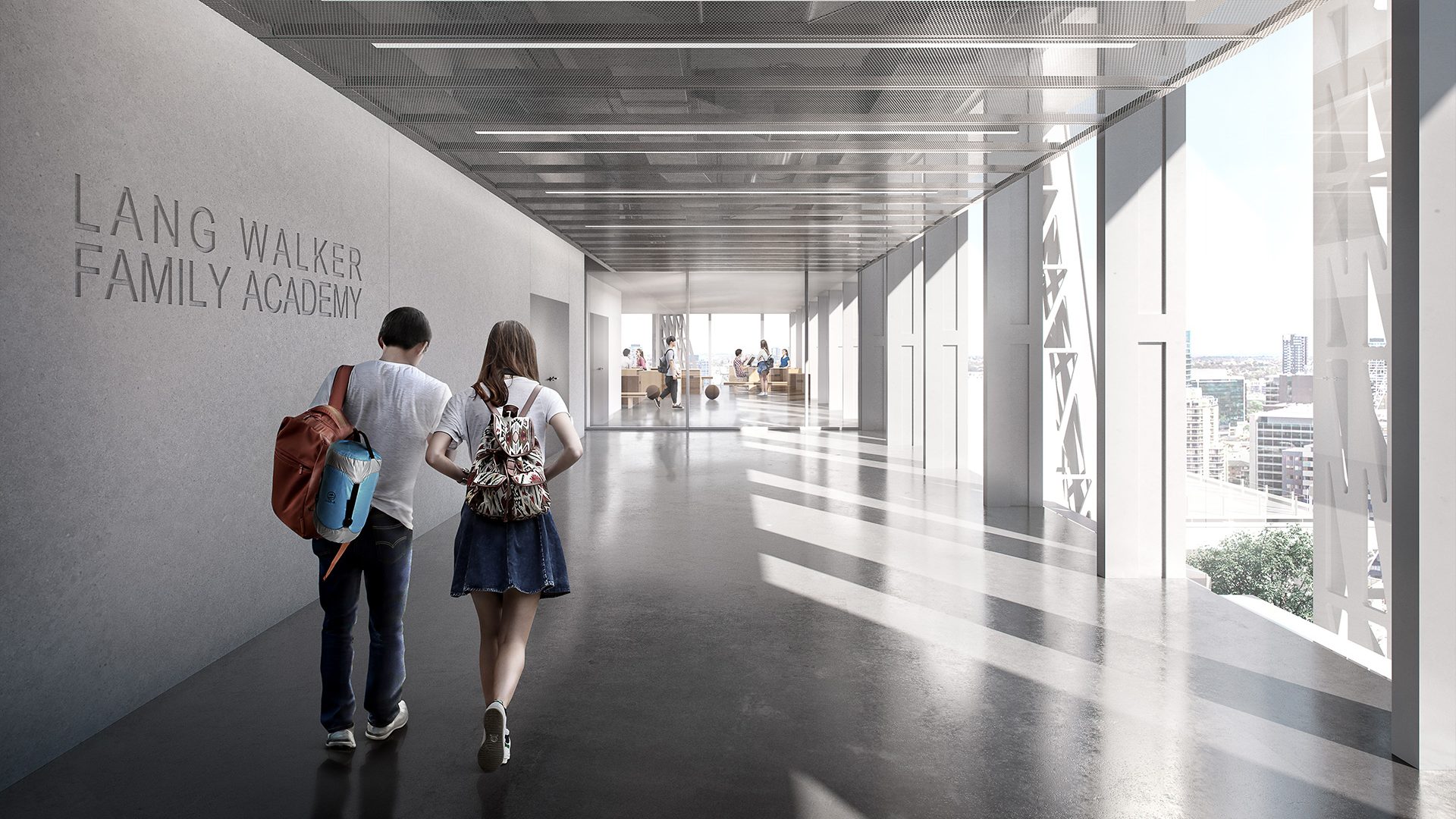
Lang Walker Family Academy
The Academy will offer world-class immersive STEM education, industry engagement and overnight stays at Powerhouse Parramatta.

















